













The magazine of the art-form of the photo-essay
“A free, really high quality photo-essay magazine. Fabulous!”
Stephen Fry. British actor, writer and film & documentary maker

Dec 2013 back issue


by David Bathgate



Kenya's northern reaches have been particularly vulnerable to climatic shifts in recent years. In the country's
Turkana District it has been either no rain at all or far too much, way too early. Fields become flooded and crops rot
where they stand.
"Weather has become unpredictable," told a maize farmer near the town of Lodwar. "In the past we could count on
rains beginning at a certain time. Not any more. Things have changed."
Northeast of Lake Turkana the story has been dramatically the opposite. Lack of seasonally-expected rainfall has
dealt the death card to livestock on which pastoralists depend. Children of tribal families straddle the line between
malnutrition and its ultimate consequences. International aid organizations have stepped in with short-time solutions,
but relief has been a double-edged sword.
Farmers can often adapt to fluctuations in rainfall regimes - altering planting and harvest times. For those whose
livelihoods are cattle and goats, the game is totally different. They must take what comes. If there's no water herds
are in jeopardy. In the absence of alternatives, tribals must rely on outpours of aid to survive. And the majority of that
aid moves no farther than towns and villages where passable roads end.
These realities engender a cost. Scheduled distributions of food and medical care come to be dependent upon. In
exchange for nutrition and health care security, tribal peoples - once nomadic, are becoming increasingly more
sedentary, abandoning cultural and ancestral ways for what they see to be - a "sure thing."

Tribal villagers near Meyan, Kenya await medical assistance and food distribution provided by Medecins Sans
Frontieres.
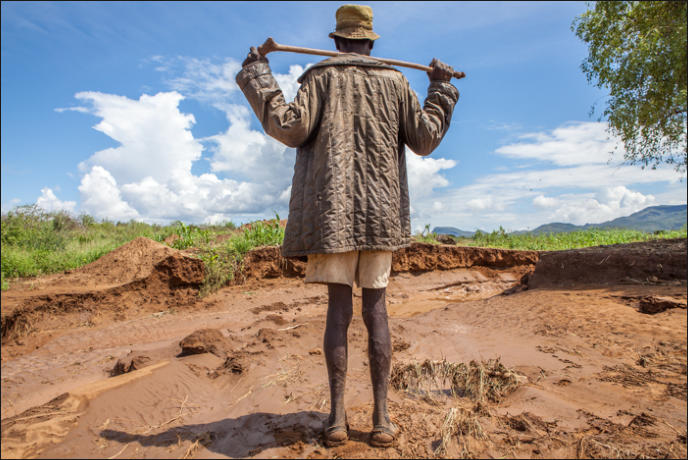
A farmer surveys damage to his maize crop following unseasonal heavy rains near Lokichoggio, Kenya.

A tribesman crosses arid land of western Turkana District, Kenya.
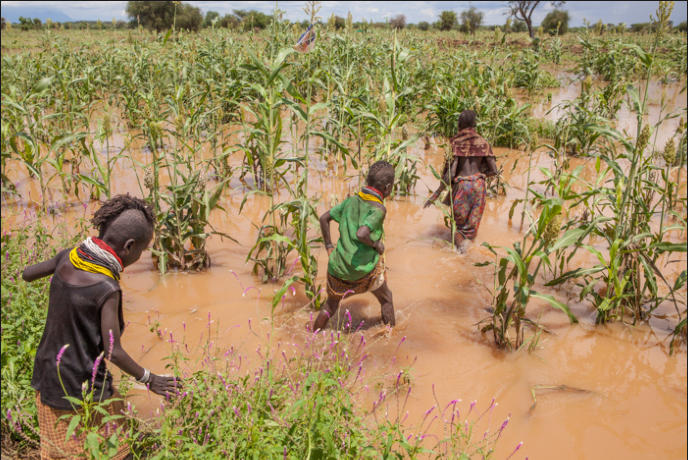
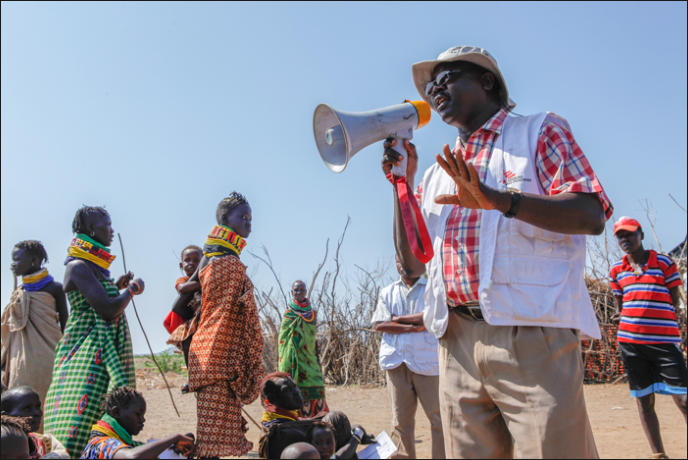
A Medecins Sans Frontieres worker organizes tribal villagers for supplementary food distribution at Kokuro, Kenya.
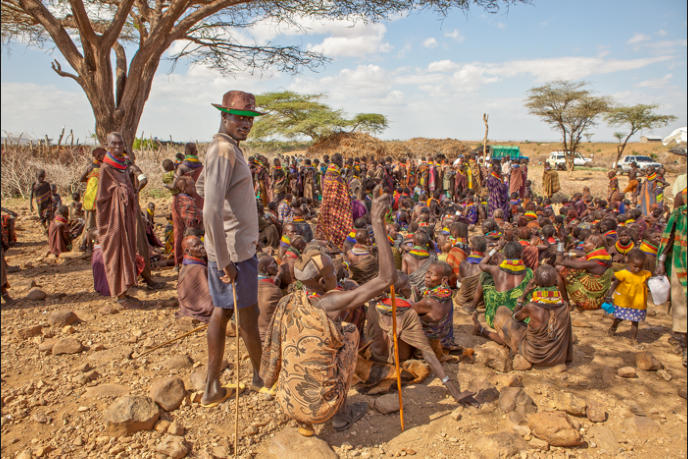
Tribal villagers await medical assistance and food distribution provided by Medecins Sans Frontieres. Meyan, Kenya.
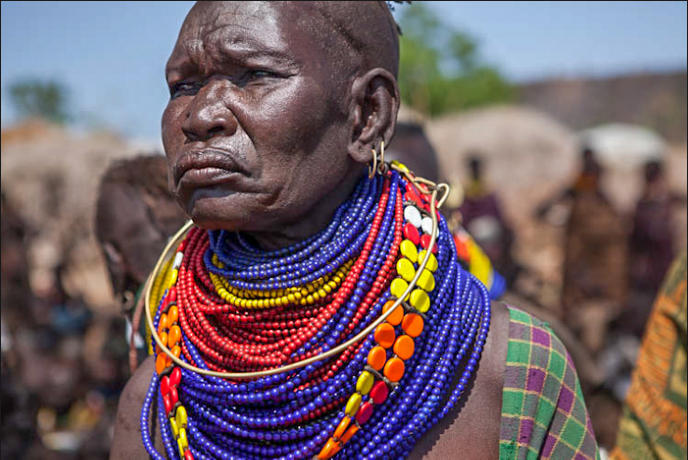
A tribal village woman waits with others for medical assistance and food distribution provided by Medecins Sans
Frontieres at Meyan, Turkana District, Kenya.

Tribal village family members outside their home in Meyan, Northeastern Turkana District, Kenya.

Women and children queue at a local hospital to receive supplementary food provided by the U.N. World Food
Programme. Lodwar, Turkana District, Kenya.

Employees of the U.N. World Food Programme transport supplementary food for distribution near the town of Lodwar,
Turkana District, Kenya.

Volunteers prepare supplementary food, contributed by the U.N. World Food Programme, for distribution to families
near the town of Lodwar, Turkana District, Kenya.
Tribal villagers enter a medical assistance and supplementary food distribution queue set up by Medecins Sans
Frontieres near Meyan, Turkana District, Kenya.
A Medecins Sans Frontieres doctor attends to tribal villagers during a supplementary food distribution session. Meyan,
Kenya.

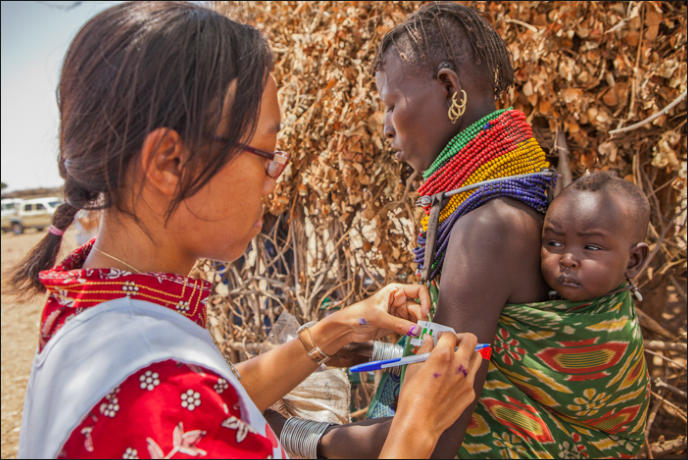
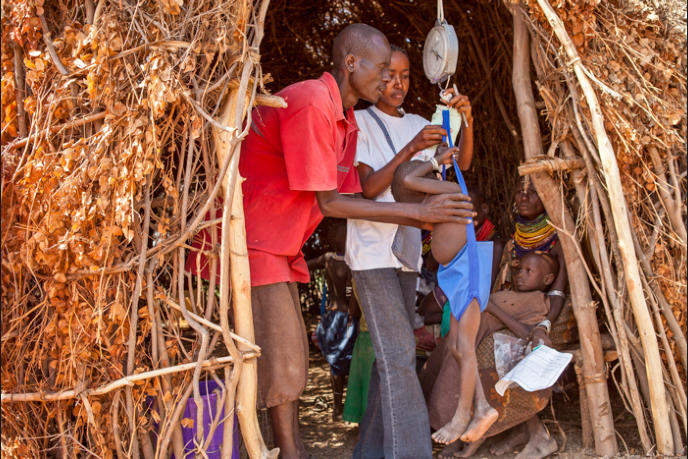
A tribal boy is weighed before his family receives supplementary food provided by Medecins Sans Frontieres. Village
of Kokuro, Turkana District, Kenya.

Carrying flour, cooking oil and infants, tribal women leave a supplementary food distribution station organised by
Medecins Sans Frontieres. Meyan, Turkana District, Kenya.











